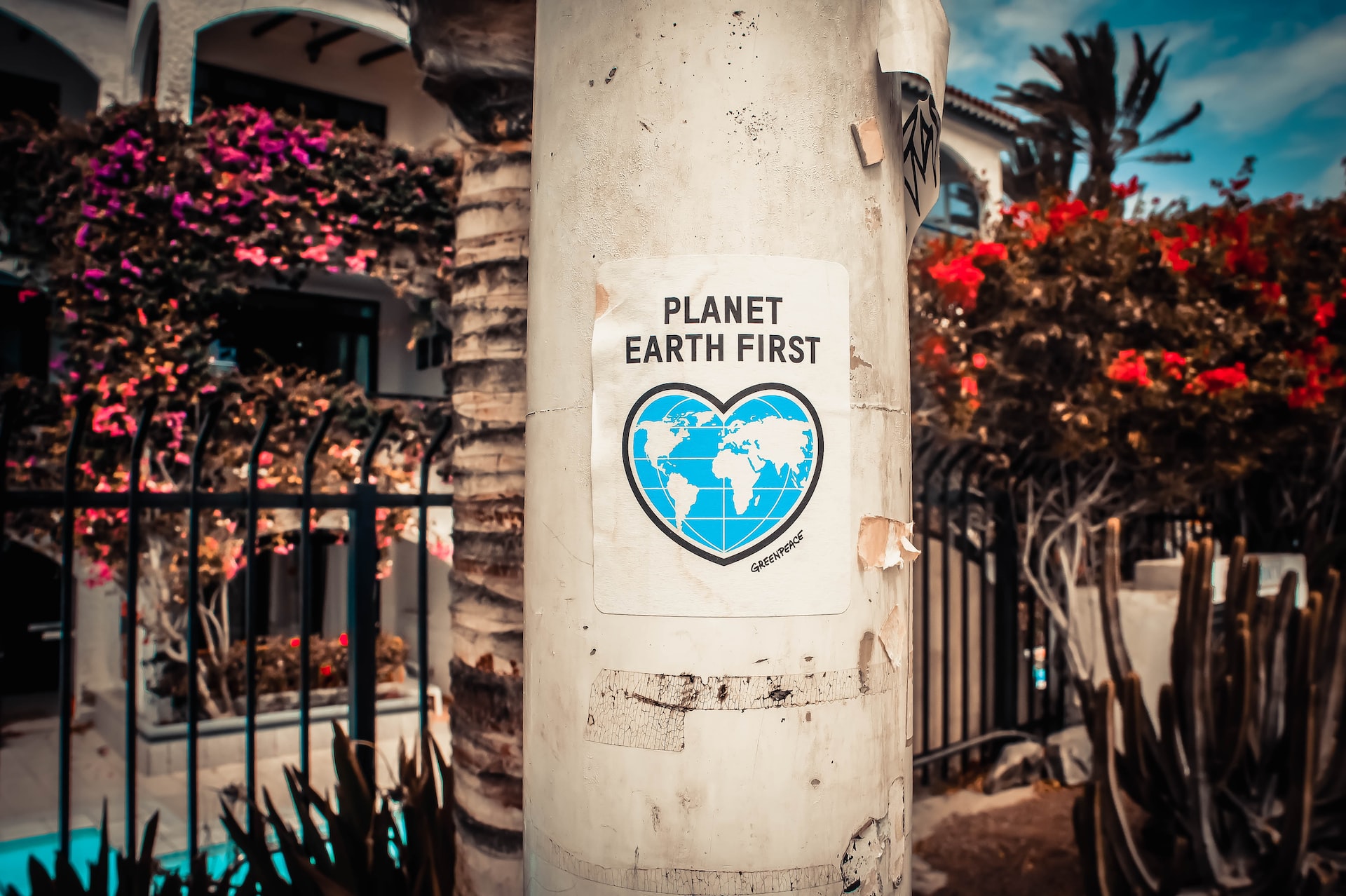
9 Ways to Celebrate Earth Day
We are reader-supported. When you buy through links on our site, we may earn affiliate commission.
Since observing the first Earth Day on April 22, 1970 — marked by 20 million people marching across the United States — the world has taken the day to learn about key environmental issues, educate others, and do something that supports plants and animals alike. While people should promote a healthier planet daily, you might want to do something extra special during Earth Day this year. Here are nine ways to celebrate Earth Day in 2023 and make a difference.
1. Join a Clean-Up
There’s no better way to save the planet than to take action. Community recreation sites, like parks and beaches, get much foot traffic throughout the day, meaning they might be a bit polluted after some time.
Contact your town or city’s Public Works department to find out about local clean-up events you can participate in this Earth Day. You might even decide to organize your own clean-up with friends, family and neighbors.
Cleaning up litter and beautifying your community will make you feel accomplished this Earth Day. After all, these areas aren’t going to clean themselves.
2. Plant Trees
Speaking of parks, a report by the National Parks Conservation Association (NPCA) found that 96% of U.S. National Parks have significant air pollution — about 88% of parks have air pollution levels that negatively impact wildlife health.
Tree planting in your community or neighborhood helps reduce particulate matter (PM2.5) and improve air quality.
One study suggests that certain tree leaves are most effective at removing particles from the atmosphere, such as elder trees, which remove 70.5% of PM2.5 and yew, which remove 71.5%. Meanwhile, silver birch trees delivered the best results at 79%.
Generally, urban areas have significantly higher pollution levels like PM2.5, nitrogen dioxide (NO2), and ozone due to population density, traffic and industrial sources.
3. Share Posts on Social Media
There are over 4.26 billion social media users worldwide, making online platforms convenient for reaching many people about the most critical ecological issues.
Create original social media posts for Facebook and Instagram or repost content from reputable environmental organizations and agencies.
Are polar bears your favorite animal? Post about ongoing efforts to save them amid Arctic melting. Maybe you want to compile a list of zero-waste product alternatives for consumers instead.
Stay mindful about your shares, and aim for accuracy with every post. Also, avoid content that sends mixed messages about sustainability or greenwashing.
4. Contribute to Science
You don’t need an environmental science or biology degree to make scientific contributions. Participating in citizen science projects can help advance research and discoveries this Earth Day.
Citizen science has become integral to generating data for biodiversity and pollution studies. Scientists look to citizen scientists to provide monitoring and written or visual documentation to reinforce their sustainability studies.
You can find government agency-based projects by visiting CitizenScience.gov or searching for local citizen science projects on SciStarter.org.
5. Host an Earth Day Movie Marathon
Saving the planet is more fun when you do it with friends and family — and an eco-friendly movie marathon might be the ticket this Earth Day.
Turn the lights off for energy efficiency, and offer some plant-based snacks for an afternoon viewing of environmental documentaries and films.
For instance, “David Attenborough: A Life on Our Planet” discusses how the earth has changed during Attenborough’s 93-year life, including population growth, climate change, and biodiversity loss.
Other interesting Earth Day-themed documentaries include the following:
- “Garbage Warrior”: Learn about Mike Reynolds, who built a sustainable Earthship residential community in New Mexico.
- “Gasland”: Discover how fracking has negatively impacted ecosystems and human health nationwide — and watch the water from a household faucet get set on fire.
- “Chasing Coral”: Watch how filmmakers and scientists aim to document a timelapse of a coral bleaching event for the first time.
- “A Plastic Ocean”: Learn about the ocean’s plastic pollution problem, ecological consequences, and possible solutions.
- “My Octopus Teacher”: Watch an underwater filmmaker connect with an octopus as he shares critical lessons he’s learned from her world.
- “The Devil We Know”: Follow how West Virginia citizens took on DuPont for polluting their water supply in one of the best-known environmental cases of our time.
Likewise, kid-friendly titles that focus on conservation and wildlife protection include “Fern Gully — The Last Rainforest,” “Happy Feet,” “Free Willy,” “Bambi,” and “Wall-E.”
6. Visit a Local Farmer’s Market
Calls to “buy local” have increased for a good reason throughout the years. Opting for locally-grown goods has several environmental, social, and economic benefits.
Locally-grown food significantly reduces the number of miles food generally travels to get to your grocery store. It also limits packaging needs, ensuring less energy use and lower emissions. Other benefits of purchasing local goods include:
- Supporting the local economy and helping create jobs
- Knowing where you’re food comes from and improving quality control
- Preserving food’s rich nutritional value with shorter harvesting and distribution times
- Eating foods that use fewer pesticides, fertilizers, and genetically-modified organisms (GMOs)
- Protecting land from development by establishing organic farms
Before heading out to the supermarket on Earth Day, consider visiting your local farmers market for fresh, locally-grown produce instead.
7. Plant a Native Garden in Your Yard
The Audobon Society estimates that the U.S. has lost 150 million acres of habitat and farms from urban sprawl and land fragmentation — this has had severe consequences for local wildlife and ecology.
Those with green thumbs might want a jumpstart on their garden by planting native shrubs, trees, and their yard.
Native plants restore habitat for birds and pollinators and require less maintenance. Considering they’re well-adapted to the local area, they tend to require little irrigation, allowing you to save time, money and natural resources.
8. Donate to an Environmental Cause
Thousands of environmental organizations worldwide strive to improve the planet in various ways. This Earth Day, consider donating to an environmental cause you’re passionate about.
Whether for promoting renewable energy sources, protecting safe drinking water supplies in developing countries, or protecting endangered species, environmental organizations and charities rely on donations to make a difference.
9. Write a Letter to Your Representatives
Reaching out to your representatives is the most effective way to encourage environmental protection. Politicians are responsible for creating legislation that prevents environmental degradation and improves ecological outcomes.
If you know of a need for environmental policy in your community or are concerned about a widespread ecological issue, sending a well-written, science-backed letter to your representative helps raise awareness and drive change.
Celebrate Earth Day to Protect the Planet
Collective action is powerful for promoting a healthier planet. You can participate in this year’s Earth Day by focusing on eco-friendly initiatives in your local area or finding ways to celebrate with the online community.
Share on
Like what you read? Join other Environment.co readers!
Get the latest updates on our planet by subscribing to the Environment.co newsletter!
About the author
Maria Visser
Maria serves as the Assistant Editor of Environment.co. A true foodie and activist at heart, she loves covering topics ranging from veganism to off grid living.





